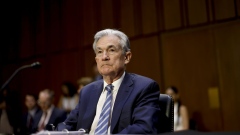Apr 29, 2020
Canada's $200B tab to fight COVID-19 is worth it: CIBC's Shenfeld
CIBC economist says the government can't afford to not continue offering financial stimulus
Fortunately, in Canada, the public policy debate surrounding the right response to the COVID-19 pandemic has been more fact-based than partisan, but there are still reasonable differences of opinion. Some are pressing for a more rapid relaxation of social isolation measures. Others fear that the costs of debt-financed government spending to tide us through this freeze, and the unleashing of “money printing” by the Bank of Canada, will doom us to massive tax hikes or soaring inflation. Does that mean that the health and economic policy medicine is worse than the disease?
Clearly, South Korea found a better way. It was ready to quickly launch wider scale testing and monitoring. That constrained the peak infection rate to a level that has yet to require a deep economic hibernation.
But Canada was hardly alone in not having that option available. Others like Singapore and some American states found that eschewing or delaying social distancing rules left them facing higher death rates, and a need to lock down economic activity. An unfettered wave of hundreds of thousands of deaths in Canada, and a swamped hospital system, would take a huge human and economic toll. Even now, in sectors like food processing that had to be left open due to necessity, we’re seeing disruptions in activity from shutdowns brought on by worker illness.
While requisite for public health, shutting down so much of the economy risks triggering a protracted collapse. Statistics Canada estimated that, in March alone, the decline in activity reversed more than five years of economic growth. April will break still more records for an economic slump.
Fiscal stimulus on an unprecedented scale is needed to meet that challenge. It’s keeping food on the table and a roof over the head of the millions of jobless Canadians. It’s pulling together a patchwork of programs to preserve the core of the business sector, so that more of today’s darkened establishments will be around to turn the lights back on and rehire when health policy allows them to do so.
Even as the full economic siege begins to lift, governments will have to guard against pulling back too abruptly. Asking restaurants to operate with half their tables and their stand-up bar sitting empty to limit contagion risks might not leave them profitable; their survival might require tax reductions, wage subsidies, or rent support for a while longer. Benefits to those without jobs are going to be a lasting cost until we’re further along in the recovery.
In the years ahead, we may need to tap federal infrastructure funds, including the Infrastructure Bank, to take more of the load off cash-strapped provinces and local governments. Targeted fiscal policy measures might be key to leveraging private capital to accelerate the shift into the growth sectors needed to replace industries that have taken a more lasting hit to their prospects. Not every sector can make it through such a deep recession.
We can’t afford not to do this. It’s no overstatement to point out that the Great Depression started with a similarly scaled slide to what we’re now seeing. Still, at the federal level, we’re looking at a roughly $200-billion deficit, and it’s right to ask how we will pay for it.
We won’t pay it back. Unlike you and me, governments live forever, and can roll over their debt rather than ever pay the principal. The actual burden on future taxpayers will be the interest on that debt. The government could lock an additional $200 billion in debt in for decades at one per cent or so, or $2 billion a year in interest costs. A future tax hike or spending cut worth 0.6 per cent of 2019 federal revenues would cover that, a reasonable price to pay to defend against a second Great Depression.
The Bank of Canada is helping to keep those borrowing costs down by buying hundreds of billions in federal, provincial and corporate bonds through quantitative easing, or as some call it, “printing money”. That sounds like a harbinger of inflation, and it would be if done in normal times when demand for goods and services was strong.
But many central banks outside of Canada took similar steps after the last recession, and all managed to wean the economy off that measure before an inflation upsurge took hold. Our central bank has done an admirable job in keeping inflation near its two per cent target for nearly three decades, under several different governors. As an institution, it has earned our trust that it can steer us on course after this crisis.
While costly or unprecedented, we can afford to take our social distancing, monetary and fiscal policy medicine because, for our health and that of our economy, we can't afford not to.
Avery Shenfeld is managing director and chief economist of CIBC Capital Markets. This opinion piece was provided exclusively to BNN Bloomberg.


